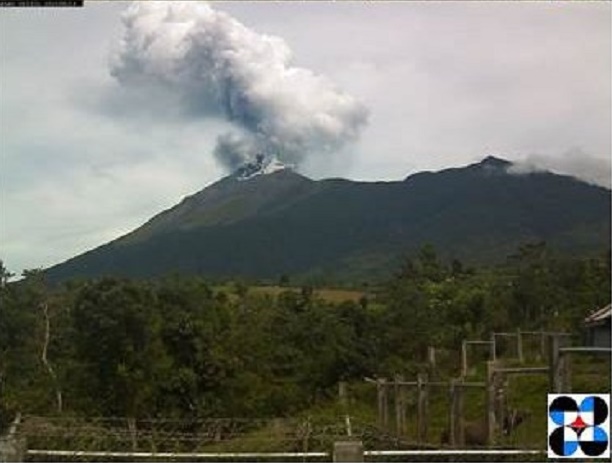
Kanlaon Volcano | DOST photo
CEBU CITY, Philippines — The Philippine Institute of Volcanology and Seismology (Phivolcs) has reminded the public to heed the prohibition against entry within the four-kilometer radius of the Kanlaon Volcano in Negros island after it recorded a series of volcano-tectonic earthquakes on its western flank in the past 24 hours.
Phivolcs said they have recorded at least 136 volcano-tectonic earthquakes as of 8 a.m. this Monday, June 22, 2020.
“DOST-PHIVOLCS would like to remind the public that Kanlaon Volcano is at Alert Level 1 which means that it is at an abnormal condition and has entered a period of unrest,” Phivolcs said in its 8 a.m. bulletin.
“The local government units and the public are strongly reminded that entry into the 4-kilometer radius Permanent Danger Zone (PDZ) must be strictly prohibited due to the further possibilities of sudden and hazardous steam-driven or phreatic eruptions,” Philvolcs warned.
Of the 136 volcano-tectonic tremors, the largest was a magnitude 4.7 earthquake that recorded past 2 a.m. on Monday and which was felt at intensity IV in La Carlota City, Negros Occidental.
Volcano-tectonic quakes were also felt in the following areas:
- Intensity III – Bago City, Negros Occidental; Bacolod City
- Intensity II – Canlaon City, Negros Oriental
Instrumental Intensities:
- Intensity IV – La Carlota City, Negros Occidental
- Intensity III – Bago City, Negros Occidental; Bacolod City
- Intensity I – Iloilo City
Phivolcs also reported an observed slight deflation of the lower and mid slopes of the volcano since January.
Read: Kanlaon now under Alert Level 1 – Phivolcs
Kanlaon Volcano had been under Alert Level 1 since March 2020.
“Short-term electronic tilt monitoring on the southeastern flanks recorded continuing deflation on the lower slopes but inflation on the mid slopes since April 2020,” Phivolcs noted.
Read: Phivolcs: No ‘Taal-like’ magmatic eruption expected of Kanlaon yet
According to the agency, their observations indicate hydrothermal or magmatic activity underground.
Phivolcs also reported a moderate emission of white steam-laden plumes from its vent. As of June 13, Phivolcs said the sulfur dioxide (SO2) emission was measured at an average of 438 tonnes per day.
“Civil aviation authorities must also advise pilots to avoid flying close to the volcano’s summit as ejecta from any sudden phreatic eruption can be hazardous to aircraft,” Phivolcs added. / dcb